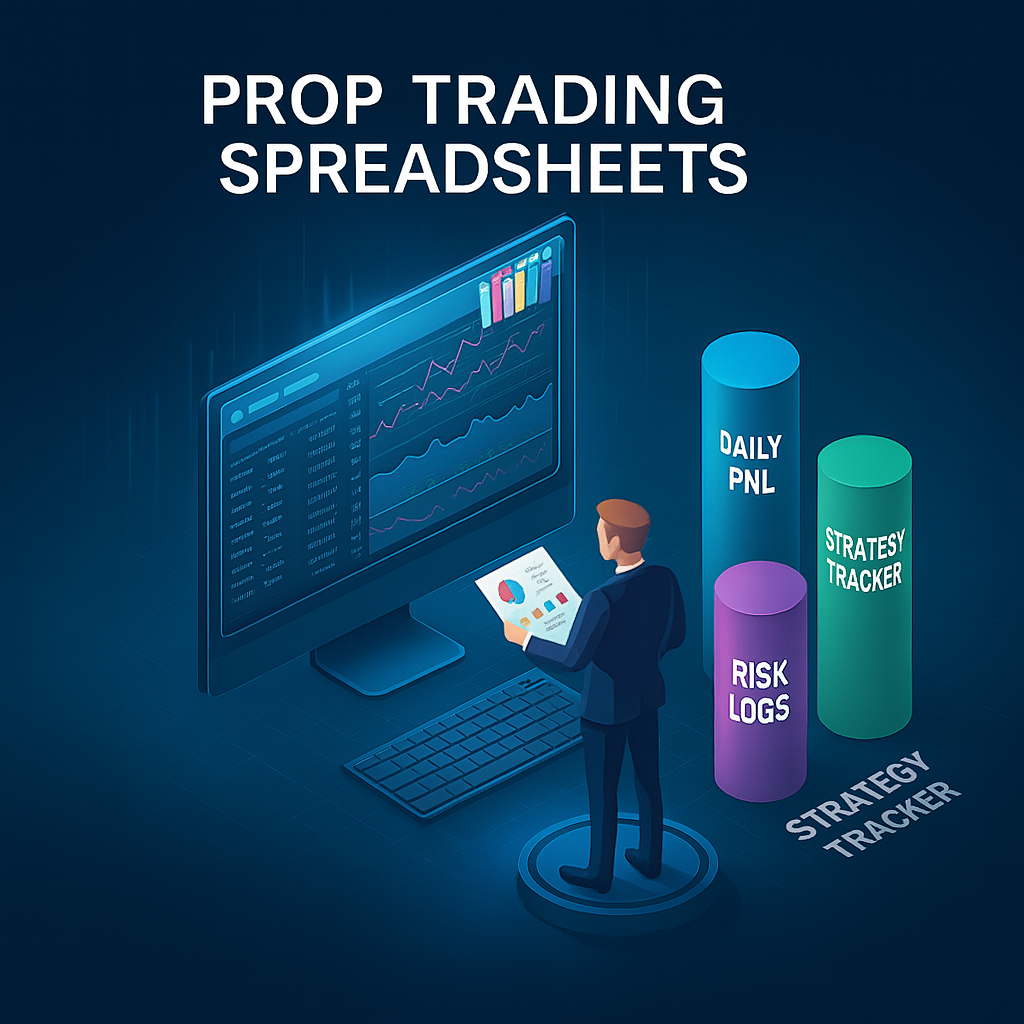How to Use Spreadsheets to Track Prop Trading P&L
In the fast-paced world of proprietary trading, staying organized is essential. Whether you’re scaling up or just starting, prop trading spreadsheets offer a simple yet powerful way to track your performance and stay in control. From daily profits to long-term growth metrics, a well-built spreadsheet can help you make better decisions and maintain discipline across all trading activities.
In this guide, you’ll learn how to build and use spreadsheets effectively to track profit and loss (P&L), monitor risk, and analyze trade performance. Tools like these are especially useful for traders at firms like Larsa Capital, where capital management and consistency matter most.
Why Track P&L in Prop Trading?
Profit and loss tracking is more than just reviewing your gains. It’s about accountability, performance evaluation, and planning. When you’re working with firm capital, every trade carries both opportunity and responsibility. Therefore, understanding your data is crucial.
Manually updating your spreadsheet might seem basic compared to sophisticated trading platforms, but it forces you to review every trade. That daily habit builds discipline and reinforces good decision-making. Moreover, spreadsheets can be customized to reflect your trading strategy, targets, and rules.
Building an Effective Prop Trading Spreadsheet
You don’t need complex software to manage your trades. In fact, tools like Google Sheets or Microsoft Excel are more than enough when structured properly. Here’s what your prop trading spreadsheets should include:
1. Trade Log
Every spreadsheet should begin with a detailed trade log. Include these columns:
-
Date
-
Instrument
-
Entry price
-
Exit price
-
Position size
-
P&L
-
Commission
-
Notes
Not only does this give you a snapshot of performance, but it also helps identify patterns and mistakes.
2. Daily Summary
Create a daily P&L tracker to monitor performance over time. Use formulas to automate:
-
Daily gross/net P&L
-
Cumulative profits
-
Win/loss ratio
-
Average risk per trade
This overview helps you stay aligned with prop firm expectations, especially during evaluation phases.
3. Risk Management Tracker
Discipline is key in prop trading. Your spreadsheet should include:
-
Max daily loss
-
Max drawdown
-
Risk per trade %
-
Stop loss and take profit targets
This data ensures you stay within firm-imposed limits and develop a professional approach to trading.
4. Monthly Review
At the end of each month, conduct a review section in your spreadsheet. Focus on:
-
Best and worst trades
-
Strategy performance breakdown
-
Psychological state reflections
-
Adjustments for the next month
This section transforms your spreadsheet into a trading journal and coaching tool.
Benefits of Using Prop Trading Spreadsheets
Although many platforms offer automated reporting, spreadsheets still provide several unique advantages:
-
Customization: You can tailor it to your strategy and style.
-
Clarity: A manual review process reinforces learning.
-
Control: You own and structure the data exactly how you want.
-
Portability: Spreadsheets work offline and sync easily with cloud tools.
Importantly, using a spreadsheet encourages a proactive approach. Rather than relying solely on dashboards, traders become more aware of their performance and behavior.
Common Mistakes to Avoid
When building your spreadsheet, avoid these pitfalls:
-
Overcomplication: Keep it clean and simple. Avoid too many columns or formulas.
-
Inconsistency: Update your sheet after each session or daily. Delays make the data less meaningful.
-
Ignoring notes: Writing down the “why” of each trade helps with future reviews.
Also, never underestimate the power of color coding. Simple highlights can improve readability and guide your focus toward the metrics that matter.
Advanced Tips for Tracking and Analysis
Once you’re comfortable, consider adding advanced features such as:
-
Conditional formatting for losses over 2%
-
Charts to visualize monthly performance trends
-
Drop-down menus for trade type or strategy used
-
Pivot tables to analyze profitability by asset class or time frame
These additions elevate your spreadsheet from a simple tracker to a complete analytical dashboard.
Spreadsheet Templates for Prop Traders
If you’re not sure where to start, there are many templates online. However, at Larsa Capital, many traders build their own tools tailored to their trading plans. That way, the sheet reflects not just performance, but also psychology, goals, and risk approach.
Some useful tabs to consider:
-
Dashboard (summary of stats)
-
Daily log
-
Weekly review
-
Trade screenshots and notes
-
Goal tracker (e.g., reach X% profit per month)
Why Prop Trading Spreadsheets Are Still Relevant
Despite all the trading technology available today, spreadsheets remain one of the most reliable tools for serious traders. They encourage responsibility, help track real performance, and allow full transparency. Especially in a prop trading environment where capital access depends on discipline, using a spreadsheet can be a major advantage.
Final Thoughts
Prop trading is not just about taking trades—it’s about managing capital effectively. Prop trading spreadsheets give you the structure and visibility needed to operate like a professional. When used consistently, they help improve performance, reduce emotional mistakes, and ensure alignment with firm goals.
If you’re trading with Larsa Capital or aspiring to, building a robust spreadsheet system is one of the smartest moves you can make today.

